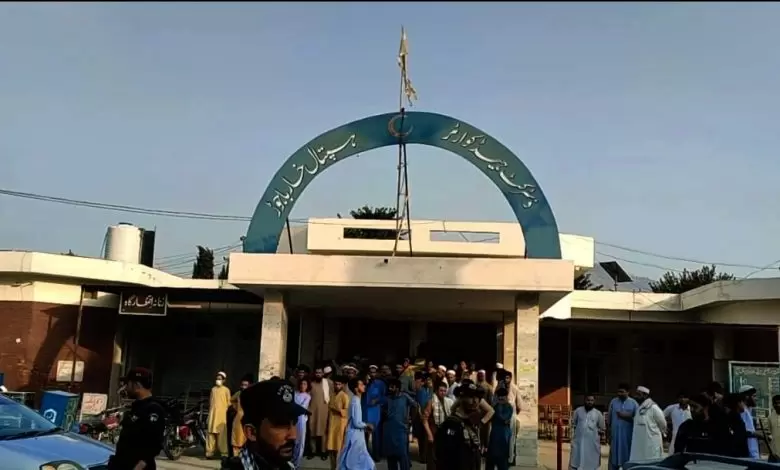
The month of April has witnessed the onset of intense heatwaves across Peshawar and various cities in Khyber Pakhtunkhwa.
Residents are visibly distressed due to the soaring temperatures, while meteorologists note that the duration of heatwaves during summer is increasing every year.
Consequently, the early arrival of heatstroke and heatwave episodes is becoming more frequent, with their intensity extending into months previously known for moderate and pleasant weather. April, traditionally recognized as the beginning of summer, has over the past few years shown a marked rise in temperatures.
The Provincial Disaster Management Authority (PDMA) of Khyber Pakhtunkhwa has forecasted a significant spike in temperatures between April 27 and 30. In a special alert issued to all district administrations, the PDMA warned of daytime temperatures exceeding the seasonal norm by 4 to 6 degrees Celsius. This surge could elevate risks related to heatstroke, dry weather conditions, and increased pressure on water reservoirs.
The phenomenon of climate change is a major contributor to the rise in heatstroke incidents. Dr. Fayaz-ul-Mola, a medical professional from Peshawar with 31 years of experience in various hospitals and currently running a clinic on Dilazak Road, emphasized the serious health risks posed by heatstroke.
Also Read: Death Toll Rises to 7 in Wana Bazaar Bombing, Key Aman Committee Leaders Among Injured
Speaking to TNN, he explained that while heatstroke is often underestimated, it is a critical issue that can lead to fatal outcomes if not promptly addressed. Prolonged exposure to high temperatures, working in direct sunlight, or dehydration can cause heatstroke.
Common symptoms include headaches, high fever, body aches, diarrhea, swelling of the eyes, cramps, cholera, and dizziness. Dr. Fayaz urged individuals to seek immediate medical attention if any of these symptoms appear, as heatstroke represents a medical emergency. Without timely treatment, it can damage vital organs such as the brain, heart, and kidneys, and could ultimately be life-threatening.
He further noted that the changing climate has not only extended the summer season but has also increased the prevalence of diseases. Over his three decades of experience, he observed that conditions like high blood pressure, heart diseases, and vision impairments, which were once rare among people under 40, are now increasingly common among young individuals.
According to Dr. Fayaz-ul-Mola, several precautionary measures can help prevent heatstroke. If symptoms such as headaches after sweating, fatigue, rapid heartbeat, muscle cramps, or yellowing of the skin occur, one should immediately consult a healthcare provider. Elderly individuals are particularly vulnerable and may lose consciousness during extreme heat, while women often arrive at hospitals in a semi-conscious state. Therefore, it is crucial to stay indoors and avoid venturing outside unless absolutely necessary.
Additionally, increasing water intake during hot weather is essential to regulate body temperature and ensure smooth blood circulation. Proper hydration not only benefits the skin and kidneys but also supports overall bodily functions.
Explaining the technical aspect, Dr. Muhammad Nafis, Chairman of the Environmental Sciences Department at the University of Peshawar, described a heatwave as a phenomenon when temperatures remain excessively high for five or more consecutive days — levels unbearable for both humans and animals. Speaking to TNN, Dr. Nafis said that heatwaves are typically observed between June and August. However, the heatwave in March 2022, which affected Pakistan, India, and Afghanistan, was an alarming deviation.
Experts link the early arrival and extended duration of heatwaves directly to climate change. Additionally, heatwaves are often followed by intense and unpredictable rainfall, further exacerbating the environmental challenges.
Dr. Nafis pointed out that there are currently no immediate solutions to reduce heatwaves. While staying indoors and minimizing outdoor activities are recommended, economic realities in Pakistan make this difficult, especially for laborers and agricultural workers. Therefore, enhanced protective measures are necessary.
These include wearing wide-brimmed hats, covering faces with cloth, drinking water regularly, and staying in shaded areas whenever possible. Outdoor workers should negotiate flexible work schedules — ideally working from dawn until 11 AM and resuming from 5 PM to 7 PM — to avoid the peak heat hours. Similarly, farmers can adapt their schedules to protect themselves from the adverse effects of heatwaves.
According to Dr. Nafis, the impacts of climate change manifest through rising temperatures, erratic rainfall patterns, and intensified floods. Addressing climate change requires two strategic approaches: mitigation and adaptation.
Mitigation efforts have so far focused predominantly on reducing carbon dioxide emissions through afforestation. However, Dr. Nafis criticized the limited scope of these initiatives, noting that afforestation efforts have been largely confined to plains, whereas Pakistan’s geography consists of over 50% mountains, 10% deserts, and 40% plains. He stressed the importance of expanding tree-planting efforts to mountainous regions.
Moreover, Dr. Nafis pointed out that mitigation strategies must address not only carbon dioxide but also other potent greenhouse gases like methane. Despite methane's significant role in disrupting the upper troposphere and contributing to erratic rainfall, it has received little attention in Pakistan. Similarly, ozone depletion, which accounts for 25% of climate change effects, remains an overlooked issue.
He concluded that tackling climate change effectively would require modern technological interventions, as traditional methods like tree plantation alone are insufficient.
2.jpeg)
1.jpeg)
09 Jul, 2025





1.jpeg)
09 Jul, 2025